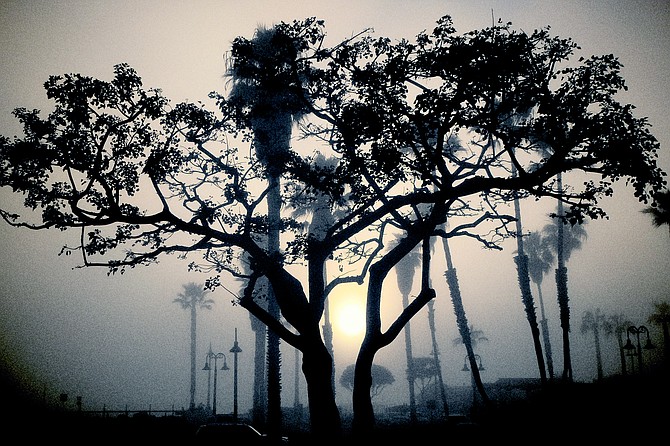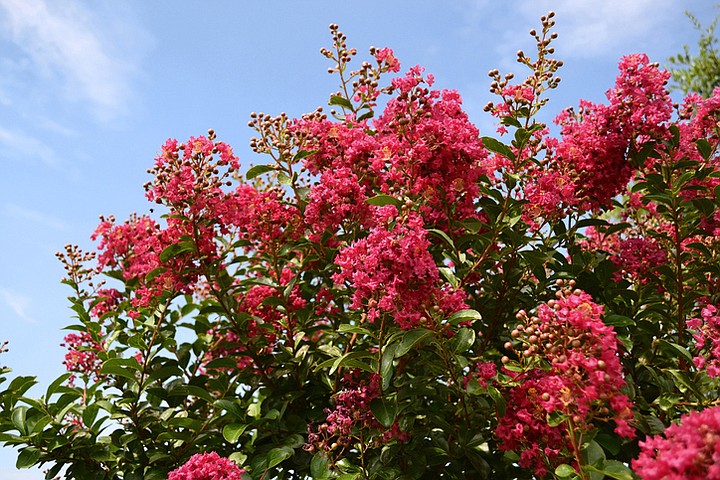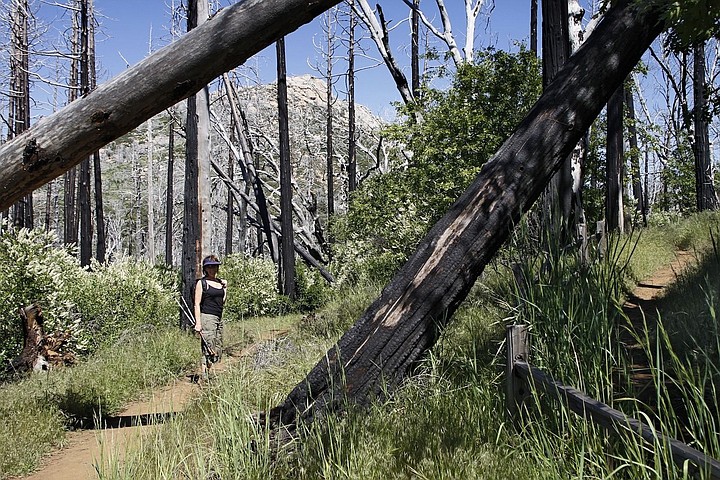 Facebook
Facebook
 X
X
 Instagram
Instagram
 TikTok
TikTok
 Youtube
Youtube

June Gloom, the cool and intermittently overcast conditions likely to dominate the beach and coastal areas through the remainder of June, mocks the already sizzling temperatures inland. If it weren’t for the ocean’s enormous resistance to changes in temperature, the hottest weather along the coast would occur near the summer solstice — June 20. Our warmest beach weather will probably not arrive until August or September, just about the time the ocean water temperatures are peaking.

Crepe Myrtles are in bloom around San Diego this month through the end of summer. This smallish, vase-shaped tree blossoms in colors ranging from white or pale pink to lavender, red, and blue. “Lilac of the South” is one of the nicknames given to this native tree of China because of its popularity in the warmer parts of the United States.

Western Azalea, a native rhododendron, is blooming this month in scattered locations throughout the county’s higher mountains. Fond of semi-shade, it’s often found growing along creeks and canyon bottoms. Like its ornamental cousins, western azalea’s fragrant white (sometimes pink or yellow tinted) flowers are borne in ornate clusters. Palomar Mountain State Park harbors a colony of them alongside a trail linking Doane Valley and Chimney Flats. White-flowering azaleas are recovering along the Azalea Glen Trail in Cuyamaca Rancho State Park; the area thoroughly burned during the 2003 Cedar Fire.
Earliest Sunrises this year, reckoned in Daylight Saving Time, start Saturday, June 4, at 5:40 am and will continue at 5:40 through June 19. This event occurs about a week before the longest days of the year, June 20 and 21 — the summer solstice — because of factors related to the shape of the Earth’s orbit and the angle between Earth’s axis and the plane of its revolution around the sun.
The above comes from the Outdoors listings in the Reader compiled by Jerry Schad, author of Afoot & Afield in San Diego County. Schad died in 2011. Planet information from SkyandTelescope.org.


June Gloom, the cool and intermittently overcast conditions likely to dominate the beach and coastal areas through the remainder of June, mocks the already sizzling temperatures inland. If it weren’t for the ocean’s enormous resistance to changes in temperature, the hottest weather along the coast would occur near the summer solstice — June 20. Our warmest beach weather will probably not arrive until August or September, just about the time the ocean water temperatures are peaking.

Crepe Myrtles are in bloom around San Diego this month through the end of summer. This smallish, vase-shaped tree blossoms in colors ranging from white or pale pink to lavender, red, and blue. “Lilac of the South” is one of the nicknames given to this native tree of China because of its popularity in the warmer parts of the United States.

Western Azalea, a native rhododendron, is blooming this month in scattered locations throughout the county’s higher mountains. Fond of semi-shade, it’s often found growing along creeks and canyon bottoms. Like its ornamental cousins, western azalea’s fragrant white (sometimes pink or yellow tinted) flowers are borne in ornate clusters. Palomar Mountain State Park harbors a colony of them alongside a trail linking Doane Valley and Chimney Flats. White-flowering azaleas are recovering along the Azalea Glen Trail in Cuyamaca Rancho State Park; the area thoroughly burned during the 2003 Cedar Fire.
Earliest Sunrises this year, reckoned in Daylight Saving Time, start Saturday, June 4, at 5:40 am and will continue at 5:40 through June 19. This event occurs about a week before the longest days of the year, June 20 and 21 — the summer solstice — because of factors related to the shape of the Earth’s orbit and the angle between Earth’s axis and the plane of its revolution around the sun.
The above comes from the Outdoors listings in the Reader compiled by Jerry Schad, author of Afoot & Afield in San Diego County. Schad died in 2011. Planet information from SkyandTelescope.org.
Comments